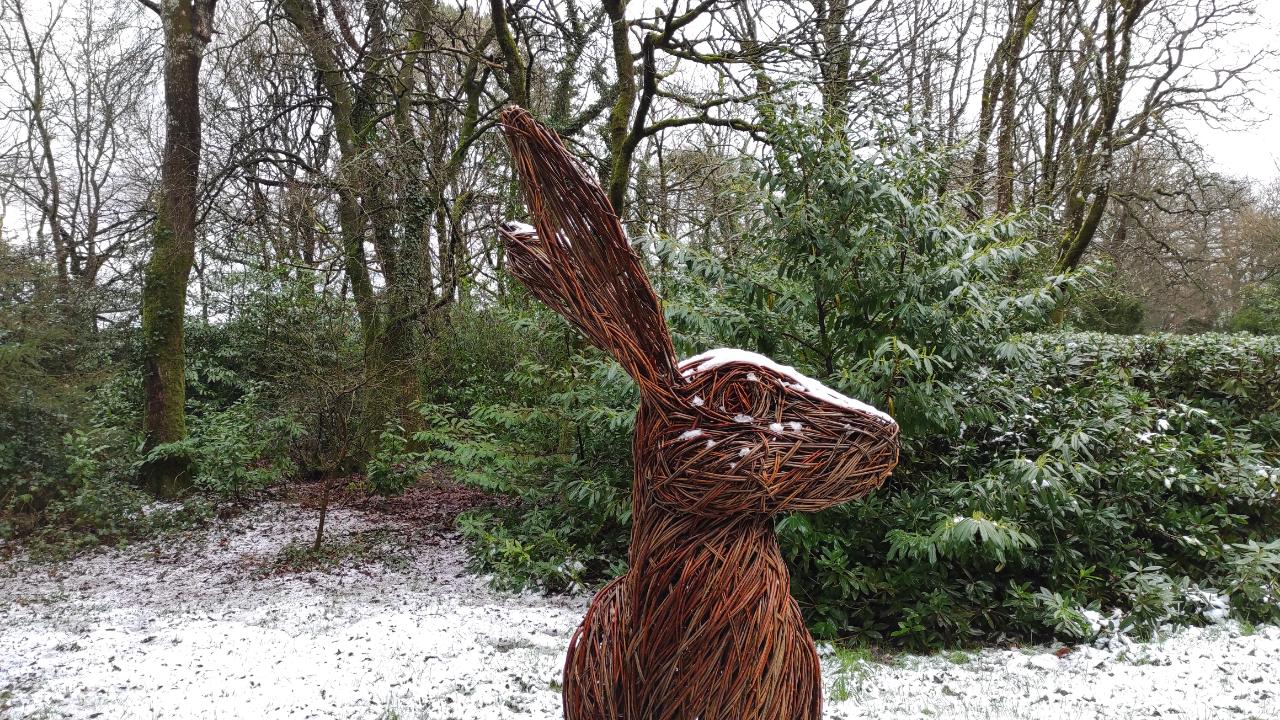A Community Assembly at the heart of a wildlife forest garden 💚
View newsletter online
Welcome to the fifth issue of the weekly Hope Garden newsletter. I have just started a new job part-time job as a Biodiversity Assistant at Ceredigion County Council, so time is now more precious than it ever was before. I will try to keep this newsletter weekly.
Sign up for the newsletter here hopegarden.uk/newsletter. And if you’d like to make any contributions or suggest any content, please email me at hello@hopegarden.uk
Jake Rayson
1. News
Grant application
The Local Places for Nature Capital Grant application has to be in by next Tuesday. The clock is ticking. This grant is for a “prototype” Hope Garden at Cilgerran in Pembrokeshire.
There is so much potential with the project, I have just found out for example that a very experienced wildlife recorder would like to help out with the wildlife ID workshops, including with the local primary school. And somebody wants to grow a small willow plantation further down the field (to makes such beautiful sculptures as the one in the featured photograph).
Play
Amidst all the form-filling, the computer-tapping, the newsletter-scribbling, I think it is really important to remember play, and why we are doing this in the first place. It is to have fun, seriously. And nothing sums that up more than this lovely video of Pine Martens that I saw on the socials.
I remember as a child, down at the local lake, swallows playing with a feather; dropping it from a great height, letting it fall, then swooping down and catching it just before it hit the water.
Is it possible to create a wildlife playground for a whole range of different animals? Bumblebees play football but what do toads play?
Gabions
I’ve been working with a local primary school to create a wildlife forest garden. Part of it is using gabions as “units of wildlife habitat”, a term coined by gardener John Little. I’ve taken it quite literally and have planned little spaces in the gabions with gates that open.

A nice gated community of wildlife
Gabions are great, because you can incorporate them into the infrastrucure of the garden. For the Hope Garden, we are considering raised beds for accessibility and for drainage (the site is on heavy clay). And you can build raised beds out of gabions, which provides extra habitat.

Gabions come in all shapes and sizes and functions
Hoverfly Lagoon
One of the habitats I am keen on creating is Hoverfly Lagoons. Some species of hoverfly lay their eggs in water filled with detritus, and the larvae that hatch look like rat tailed maggots (hence their common name, Rat Tailed Maggots). Hoverfly are probably the cutest invertebrates ever, and they are amazing pollinators too.
The good people at garden citizen science Buzzclub have a Hoverfly Lagoon project. Normally, they’re made out of old plastic milk bottles but I think we should ditch plastic where we can.
So, I am experimenting with secondhand beer steins topped with fine wire mesh to stop the eggs from washing away in heavy rain (although to be honest, they would be sheltered in the gabion). This is what I’ve managed so far.
Standing Dead

Standing dead. Essentially a dead tree, left standing
Standing dead is another de rigueur wildlife habitat. An old dead tree, still standing in the ground, which becomes home to so very many beetles, woodlice, fungi and more. There is an apocryphal fact (the best kind) that a dead tree supports more life than a living one.
2. Links
- Ecological landscaper Rebecca McMackin is one of my gardening heroes, her monthlyish newsletter is very entertaining and well worth subscribing to.
- And here she is in conversation with Thomas Christopher, another wildlife gardening hero.
- The Biological Recording Company has another webinar, this time about the Buzz Club Citizen Science project! Thursday 16th May.
Bonus Rebecca McMackin quote, which I think is particularly relevant to the Community Assembly and co-designed nature of the Hope Garden:
making gardens that are actually part of people’s lived lives… the best way to do that is work with communities so that those gardens can be part of the environment
3. Photos

A close-up of standing dead. Look at that life.

Scarlet Elf Cup (Sarcoscypha coccinea) on a local log.

Navelwort (Umbilicus rupestris) growing well in the warm wet weather. Edible succulent leaves, glorious creamy flower spikes later in the year. Often found in local slate walls in a shadier spot.
4. Hope
Once they won direct control of the land, free peasants were able to maintain a more reciprocal relationship with nature: they managed pastures and commons collectively, through democratic assemblies, with careful rules that regulated tillage, grazing and forest use.
~ Jason Hickel, pp44 Less is More
I’ve started reading this book, as it’s been recommended by a few friends. It is a very accessible introduction as to why our economic systems work in the ecologically ruinous way that they do. And it’s hopeful, insofar as it is calling out for engagement and change.
Hope links
- The Hope Garden website hopegarden.uk
- Open Source plans on the Hope Garden website hopegarden.uk/plans
- Newsletter archives here buttondown.email/hopegarden and here hopegarden.uk/categories/newsletter/
- Social media. Not yet flowing, follow us, we will be there!
- Mastodon climatejustice.social/@hopegarden
- Facebook facebook.com/hopegardenuk
- TikTok tiktok.com/@hopegardenuk
- YouTube youtube.com/HopeGardenUK
- Pinterest pinterest.co.uk/hopegardenuk
- Instagram instagram.com/hopegardenfuture
- Ko-fi ko-fi.com/hopegarden
- Twitter twitter.com/hopegardenuk
